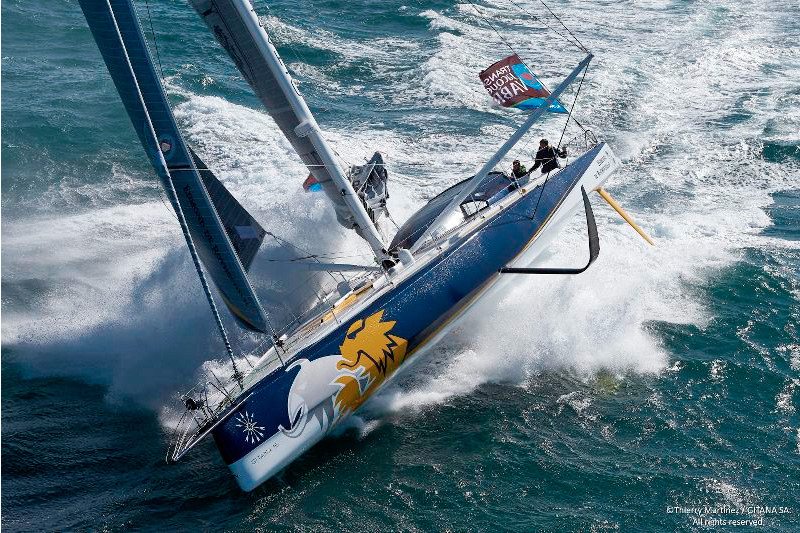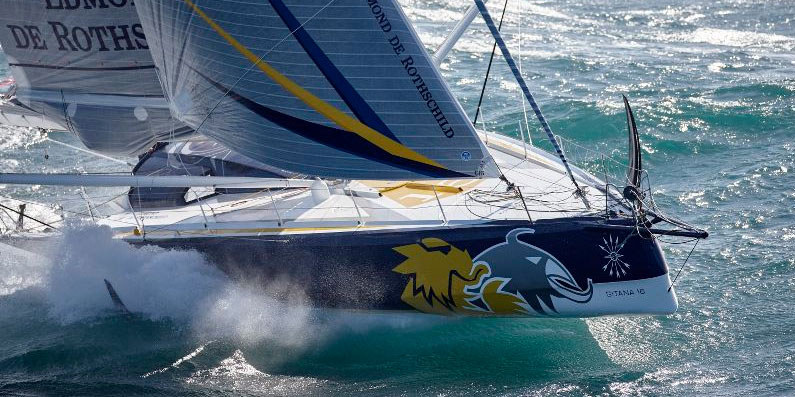
AC 34’s Foiling Legacy
In the wake of America’s Cup 34 — where deep-pocketed syndicates dumped unprecedented resources into the development and advancement of foiling technology — more and more boats have begun flying. By doing so, sailing has arguably realized its single biggest speed gain since the first Mesopotamian trader hoisted up a piece of cloth to harness the power of the wind some 5,000 years ago.
In the two years since the battle on the Bay, seemingly every new ultra-high-performance boat on earth has been designed or modified to foil. From beach cats to the revolutionary GC32 race cats, all the way up to the AC45s and MOD70s, multihulls have been realizing huge speed gains almost across the board by implementing foils. These days, when designers scratch their heads in the age-old quest for speed, the answer is as simple as it is succinct: Make it fly. Foiling in dinghies and multihulls is now commonplace, yet foiling in a lead-ballasted monohull yacht remains one of sailing’s most elusive challenges.

After the last Vendée Globe — the quadrennial solo, nonstop around-the-world classic that’s contested in 60-ft monohulls — the IMOCA class voted to adopt one-design keels and rigs in an effort to achieve greater reliability for the event’s many corporate sponsors. With a new generation of boat being designed in the run-up to the 2016 race, designers again searched for an advantage. Unsurprisingly, foils held the perceived answer and the class overwhelmingly voted to allow foils to remain completely open. As more than half a dozen teams decided to pull the trigger on a new boat for the next race, almost all of them chose to enlist the services of famed French design firm VPLP and Guillaume Verdier to get their boats to achieve liftoff.
With the Vendée Globe just over a year away, new IMOCA builds are popping out of sheds and hitting the water with increasing frequency, and almost all of them are sporting distinctive foils protruding from both sides of the hull. Not surprisingly, this new breed of semi-foiling monohull is advancing and developing at the same frenetic pace as the AC72s did during America’s Cup 34. The first team to post pictures and video of their new steed beginning to achieve liftoff was Baron Benjamin de Rothschild’s Gitana Team with Sébastien Josse and Charles Caudrelier aboard their all-new IMOCA 60 Gitana 16. She will make her racing debut in next month’s Transat Jacques Vabre in the hands of Josse and Caudrelier. With a record-setting 20 IMOCA 60s signed up for the biennial Transatlantic race, the class — and the sport — has been rejuvenated by foiling technology, and there’s nowhere to go but up, both literally and figuratively. We can’t wait to see what happens next.

Stay tuned to Latitude 38 for more on the Transat Jacques Vabre, which will start from Le Havre on October 25.
